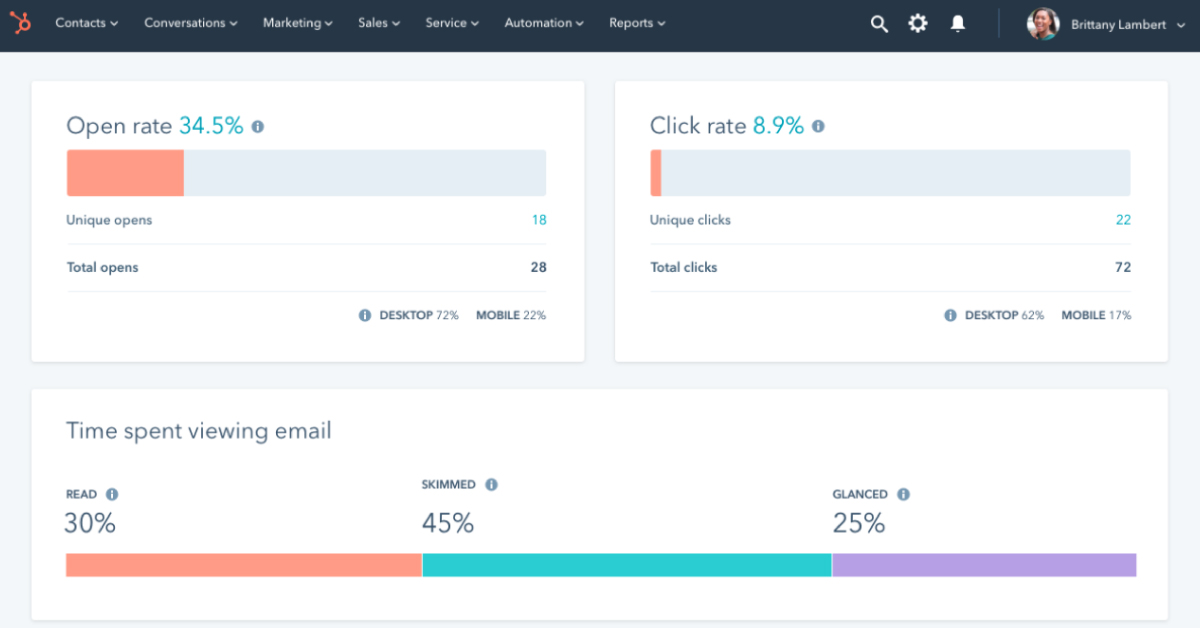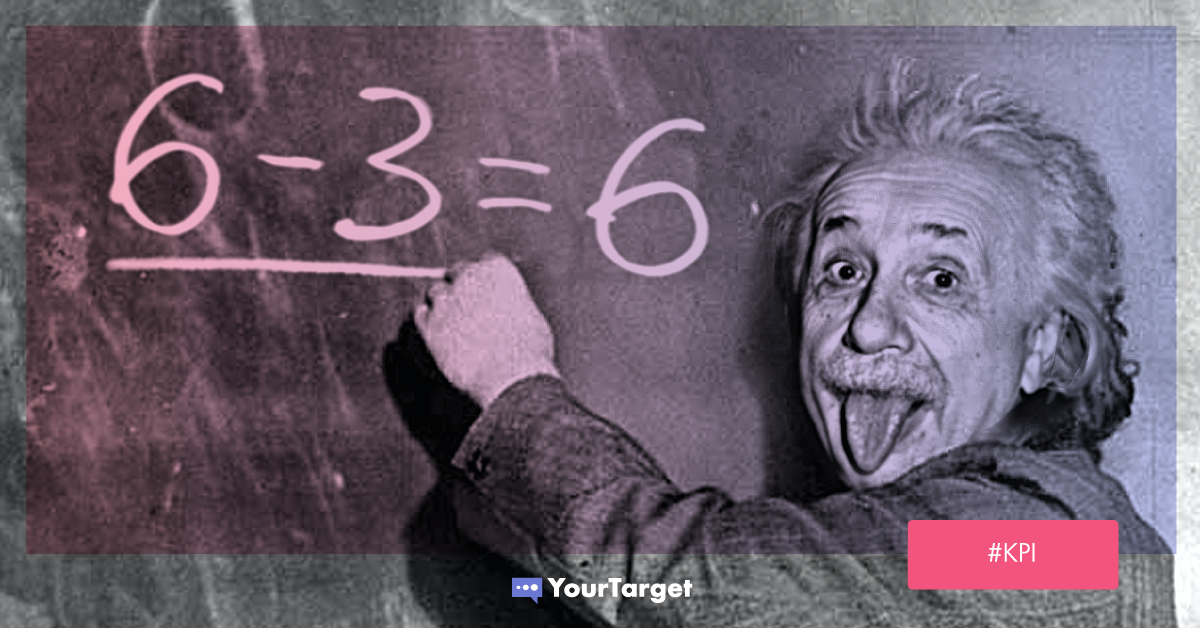Content marketing generates 3x more leads for every dollar spent than any other form of marketing. With many successful brands investing as much as 40% of their entire marketing budgets in content, it’s crucial that marketing spend is optimized to its full potential.
Measuring content marketing performance is essential to understanding whether content creation and distribution efforts are paying off. Tracking progress and measuring results allows content marketers to make educated decisions regarding future campaigns and to ensure that their efforts align with overall business goals.
In this article, we’ll discuss how content marketing teams should use metrics and key performance indicators (KPIs) to measure and improve their performance. Let’s get started!
What is a KPI?
A key performance indicator (KPI) is a measurable value that allows you to track progress and determine whether you’re on course to achieving your business goals. A good KPI should provide direct and measurable values of your progress towards your goal.
Most organizations use KPIs at different levels in order to evaluable their progress and success at reaching targets. These KPIs can be:
- High-level: These KPIs focus on the overall performance of a business
- Low-level: Focusing on measuring progress of specific departments like marketing, sales, HR, and customer support.
Why track content marketing KPIs?
When it comes to content marketing, marketers aren’t spending their time generating and producing great content to simply throw at their audience in the hopes that they’ll enjoy it.
Like any other business strategy, content marketing is a strategy that’s used to achieve specific business goals. Tracking content marketing KPIs is crucial to understanding whether your content marketing strategies are working, and how you can improve them for future campaigns.
When you have clearly defined metrics to track, you can better understand whether or not your marketing spend is producing ROI.
Optimizing your content marketing spend with KPIs allows you to measure your results and use the data you collect to make more informed decisions during your campaign. Once you have a deeper understanding of which tactics are working and which ones aren’t, you can adjust and refine your strategies for future use.
Before you can start choosing which KPIs to measure, you’ll need to outline your content marketing goals.
The first step is to identify your content marketing goals
Many marketers want to jump right into measuring their KPIs. However, without a clear goal regarding what you want your campaign to accomplish in mind, there really isn’t much point!
By defining clear content marketing goals, you can ensure that you choose the best metrics to measure your success by. This enables you to tie your content marketing objectives to KPIs and metrics that reflect and measure your specific goals.
Let’s take a look at some examples of content marketing goals and which KPIs are relevant to them.

Example goal #1: Lead generation
Did you know that 85% of content marketers report that lead generation is their most important business goal. With this statistic in mind, it’s no surprise that many content marketing KPIs lend themselves to measuring this goal.
Outlining lead generation as a business goal means that you aim to improve the reach of your brand so that more members of your target audience show interest in the products or services you provide.
How do you measure lead generation success? You’ll want to align your goals with KPIs like click-through-rate and conversions. These metrics allow you to track whether your content marketing efforts are successful in capturing lead attention and moving them through the funnel.
Example goal #2: Brand Awareness
Brand awareness is another common goal businesses hope to achieve with their content marketing efforts.
Businesses can drive engagement and build brand awareness with content in the form of emails, social media posts, and on-page content. However, it takes between 5-7 impressions to start creating brand awareness, so it’s crucial that businesses are consistently producing content that emphasises their brand message.
So what KPIs would be useful in tracking content marketing’s impact on brand awareness?
For this goal, it would be useful for marketers to track page views, social shares, and overall engagement metrics.

When it comes to identifying your content marketing KPIs, it’s essential to have a goal in mind that you can align them with. It’s no use tracking KPIs just for the sake of it.
As a content marketer, you should always be working towards achieving solid objectives. KPIs and metrics are the tools that allow you to check in with your progress and get an idea of whether your marketing campaigns are helping your business to achieve its goals.
Content marketing KPIs that are essential to track
Once you have a clear goal in mind, whether it be to increase brand awareness, generate more leads, or increase engagement among customers, you can begin to select your KPIs.
We’ve chosen some essential KPIs that can help you to track the success of your content marketing campaigns effectively.
Click-through rate
Tracking click-through rate as a KPI will allow you to understand how successful your content is in generating and converting leads.
When planning your editorial calendar, your content should always include clear call-to-actions that lead readers to a desired next step.
A call-to-action can be anything from a button asking readers to view another web page, encouraging them to download a piece of content, or to get in touch with the company. By measuring click-through rates for your content you’ll be able to determine which posts are generating the most leads, and which aren’t.

Unique page visits
Unique page visits is a handy KPI which allows marketers to track how many individuals have viewed a page within a given time period. Tracking unique page visits as a KPI allows you to track how different forms of content are performing, and even provides insights into your SEO efforts.
Page Views
Page views allow you to determine how engaging your content is while helping you to understand how far along in your content (whatever it may be) a user has gone. For example, it’ll allow you to track whether a reader dropped off on the second page, or whether they made it all the way to the end.
It’s also a good metric to track whether people are regularly visiting your page looking for new content. This helps you to understand how engaged users are with your content, and can inform future content decisions.
Time on page
Tracking time on page allows you to understand how long individuals spend consuming your content. This provides valuable insight into whether your content is meeting quality expectations (valuable and relevant). If you find that your content isn’t measuring well for time spent on page, then it might be time to reconsider your content strategy.
A similar KPI that you want to avoid fulfilling is bounce rate. Tracking this allows you to know whether your readers are quickly leaving the page because it doesn’t deliver the content they expected it to when they clicked on it. Obviously, having a high bounce rate isn’t desirable and doesn’t lend itself to your content marketing goals.
Inbound links
Measuring the amount of inbound links your content is getting allows you to understand how credible your content is. When other leaders in the field turn to your content to back up their own claims, then you know you’re on the right track to building brand authority. What’s more, inbound links can increase traffic to your site and achieve higher search engine rankings.
Social media shares and engagement
Social media plays a vital role in promoting content for both B2B and B2C businesses. Tracking social media share and engagement through comments, likes, and downloads allows you to understand how well your content is performing and which kind drives the most social engagement.
When your audience is highly engaged with your content your overall online presence will grow. Again, it’s crucial that your content remains in line with your brand identity. There definitely is such a thing as bad publicity!
Conversions
Conversions allow you to understand how many leads convert to paying customers. This reveals which kinds of content are attracting the right leads and, perhaps more importantly, the leads that are more likely to make a purchase decision after consuming your content.
Once armed with all this information, you’ll be able to use it to calculate your content marketing ROI, as well as to inform any future campaigns by understanding which content performed well and which didn’t.
It’s not over yet! Establishing and tracking KPIs is an ongoing process
Your business goals are likely to evolve over time as your organization scales up or down, and reacts to different business trends. For this reason you’ll need to constantly update which KPIs your tracking to ensure that they’re always aligned with your content marketing goals.
Content marketers should re-evaluate their KPIs on a project-by-project basis. This will allow you to keep optimizing your marketing budget, measuring performance, and improving your content strategies to achieve the best results.
Are you ready to start planning great content that’s in line with meeting your KPIs
and overall business objectives?

